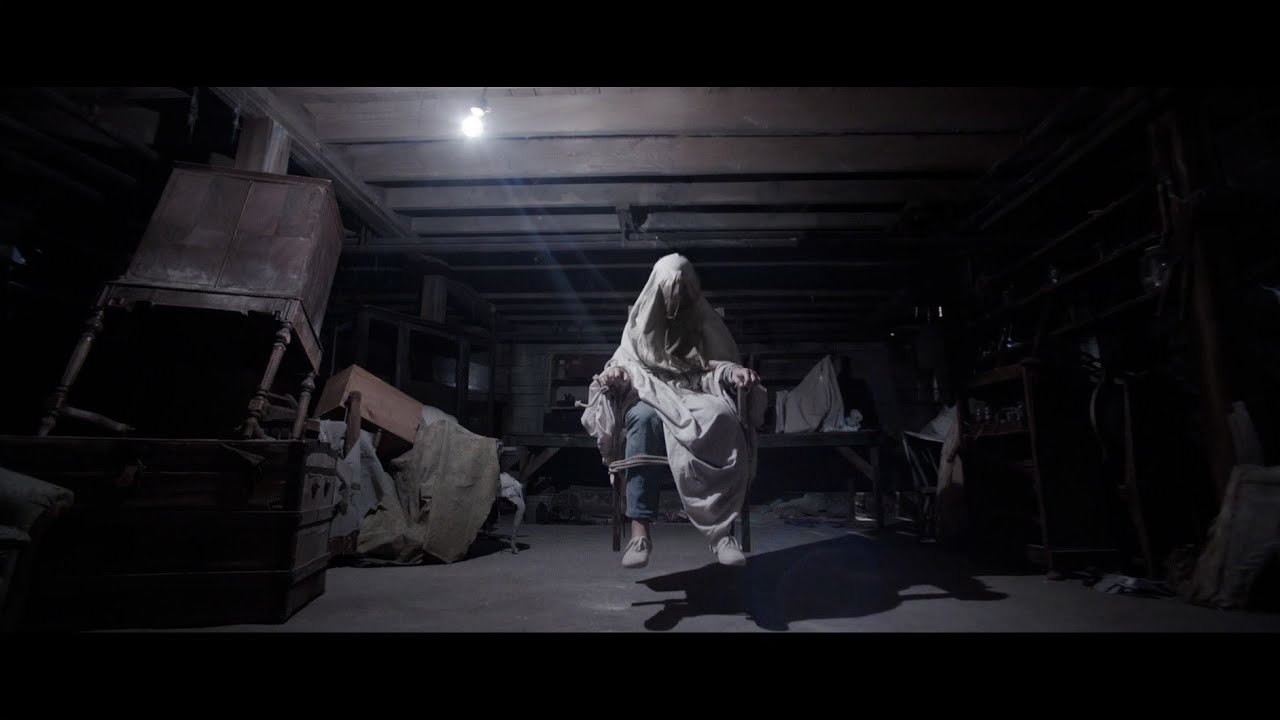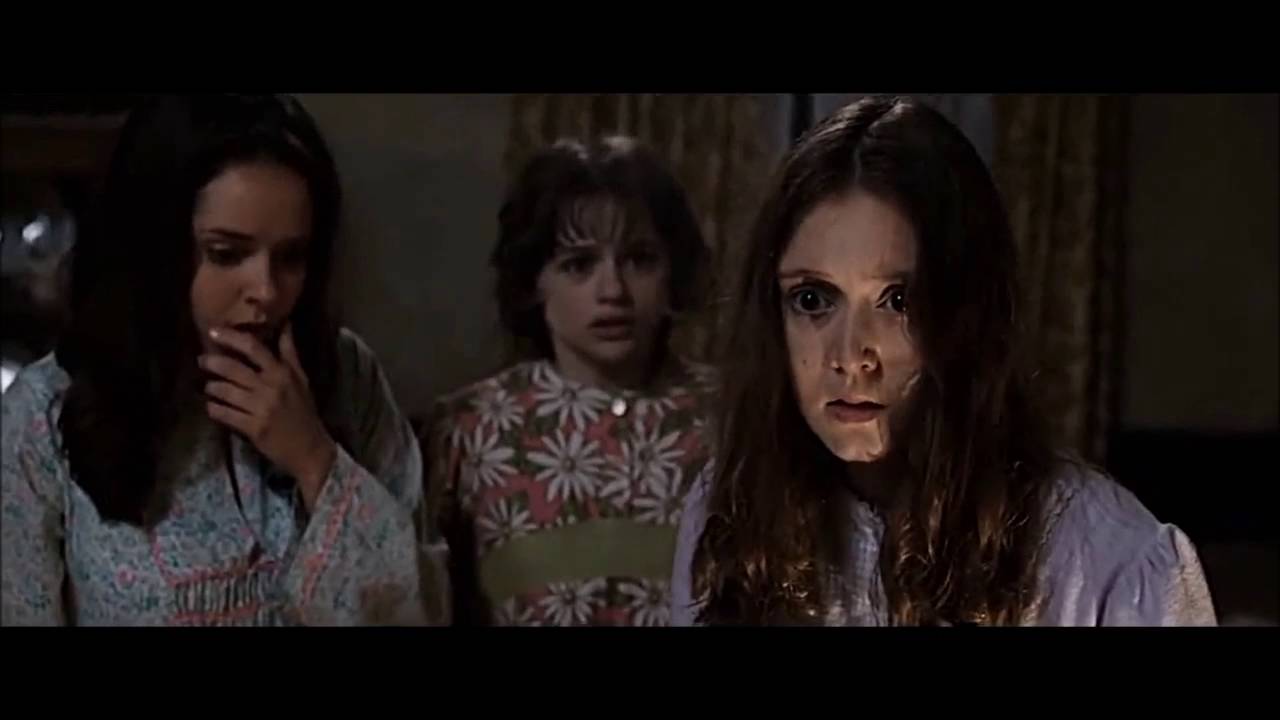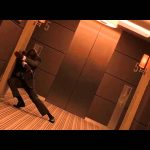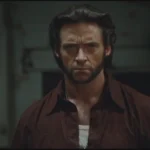🎬 The Conjuring (2013)

🎬 The Conjuring (2013)
⭐️⭐️⭐️⭐️ (4/5)
Vera Farmiga | Patrick Wilson | Lili Taylor | Ron Livingston
The Conjuring is a modern horror masterpiece that artfully combines classic haunted house scares with a hauntingly compelling true story. Directed by James Wan, this film delivers more than just cheap thrills — it constructs an atmosphere of dread and anticipation, drawing the audience into a terrifying world based on real-life events that still send chills down the spine. From its chilling atmosphere to its terrifying jump scares, The Conjuring redefines what supernatural horror can be, establishing itself as one of the genre’s finest entries in recent memory.
At the heart of The Conjuring lies a brilliantly constructed narrative, inspired by the real-life experiences of Ed and Lorraine Warren, paranormal investigators who have become legends in the world of supernatural phenomena. The film begins with the Warrens investigating a haunting in the Perron family’s Rhode Island home. The story starts off deceptively calm, building its slow-burn tension carefully, lulling viewers into a false sense of security before unleashing a torrent of fear. What starts as a subtle unease gradually builds into a relentless nightmare, dragging the audience along for a terrifying ride as the haunting takes its toll on the Perron family.
The film’s pacing is one of its strongest features. It does not rush to reveal its horrors, allowing the tension to gradually mount. There are no quick shortcuts here — the dread is palpable, and each new revelation about the house and its inhabitants’ dark past only intensifies the growing unease. The Conjuring doesn’t rely on gore or overly graphic imagery to scare the audience; instead, it expertly plays on psychological horror, using suggestion and atmosphere to create an emotional and psychological experience that lingers long after the credits roll.
One of the most notable aspects of The Conjuring is its ability to blend supernatural elements with grounded, believable characters. Vera Farmiga and Patrick Wilson, playing Lorraine and Ed Warren, deliver outstanding performances that anchor the film in authenticity. Farmiga’s portrayal of Lorraine is particularly remarkable — she brings an understated yet powerful vulnerability to the role of a psychic medium who not only feels the terror of the paranormal world but also carries the heavy emotional burden of her gift. Wilson, in turn, provides a steady, grounded presence as Ed Warren, whose unwavering faith and commitment to helping those in need offers a sense of hope in the midst of terror. Their chemistry is palpable, and their dedication to their work provides a much-needed emotional core that enhances the supernatural events around them.
The Perron family, portrayed by Lili Taylor and Ron Livingston, is equally compelling. Lili Taylor’s portrayal of Carolyn Perron, the mother of the family, is heartbreaking. She’s a woman desperate to protect her children from the escalating terror that seems to grip their home, and Taylor brings a vulnerability and fierceness to the role that makes her journey all the more harrowing. Ron Livingston as her husband, Roger, plays the role of the concerned but skeptical father, struggling to comprehend what’s happening to his family and unsure of how to deal with it. Their performances ground the more fantastical elements of the film in a sense of realism that makes the horrors they face all the more frightening.
James Wan’s direction is a key element in making The Conjuring so effective. Wan, who had already shown his ability to craft tension in Insidious (2010), further refines his skill in The Conjuring, creating an almost suffocating atmosphere of dread. He uses long takes, clever framing, and shadowy lighting to keep the audience on edge, building suspense through subtle visual cues and sound design rather than relying solely on shock value. One of the standout moments in the film is the sequence with the possessed doll Annabelle, which, though not a central character, is forever etched in the minds of viewers. This scene is a perfect example of Wan’s mastery at building suspense, using silence and a slow reveal to generate maximum fear.
What truly sets The Conjuring apart from other supernatural horror films is its careful attention to character and setting. The house itself feels like a living, breathing entity — its creaking floors, long, dark hallways, and eerie, overgrown surroundings all contribute to an unshakable sense of isolation. The film doesn’t just use the house as a backdrop but imbues it with a sinister energy of its own, almost as if the home itself is as much a character as the people in it. Wan builds this atmosphere from the ground up, and it’s this careful attention to detail that makes the scares so effective.
The jump scares in The Conjuring are particularly notable because they don’t feel cheap. Wan carefully builds each moment, and when the scares finally arrive, they are earned. These moments don’t rely on loud noises alone but are crafted through suspenseful buildup and shocking visual effects that make them feel organic rather than forced. The film also uses sound design to its advantage, with unsettling noises echoing through the house and amplifying the fear that is already building.
One of the most impressive aspects of The Conjuring is its emotional resonance. The scares are not just designed to frighten but to evoke empathy. As the Perron family begins to experience the full force of the supernatural entities in their home, the audience can feel their fear, their desperation, and their helplessness. This is not just a movie about ghosts — it’s about the emotional toll of living in constant terror, the strain it puts on relationships, and the toll it takes on the soul. The Conjuring asks its viewers to care about the characters, to root for them, and to feel their pain. This emotional investment makes the horror even more gut-wrenching when the stakes are raised.
The film’s conclusion is equally satisfying. Unlike many horror films that leave audiences with an open-ended or vague resolution, The Conjuring delivers a satisfying and complete arc while still leaving room for mystery. The film’s resolution ties up the main narrative threads but also leaves lingering questions about the supernatural world that could be explored in future stories. It’s a perfect blend of closure and possibility, offering a satisfying payoff while leaving the door open for future terror.
In conclusion, The Conjuring is a horror masterpiece that expertly balances supernatural thrills with emotional depth. Its slow-burn tension, combined with strong performances, eerie atmosphere, and superb direction, makes it a standout in the horror genre. It’s a film that understands the power of suggestion, that recognizes the importance of character, and that delivers terrifying moments that are both emotionally impactful and chilling. For fans of supernatural horror, The Conjuring is a must-watch — a haunting, memorable experience that proves horror films can be both terrifying and emotionally rich.
Rating: 9.0/10











